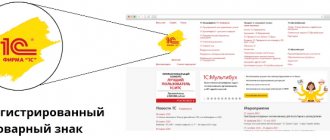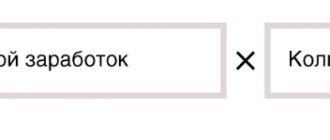When and why do you need consent to use a trademark and trademarks?
Important. Trademark, trademark, logo and other means of product identification are intellectual property. And if the designation is registered by Rospatent and a certificate is issued, then use by third parties to obtain benefits without the permission of the copyright holder is punishable by law.
To label manufactured products with someone else's logo, you must have consent for its placement from the owner. The permit is drawn up in the form of an agreement, the type of which depends on the individual conditions for each situation.
R.I. Sitdikova, Doctor of Law, Professor of the Department of Business and Energy Law, Faculty of Law, Kazan (Volga Region) Federal University; Professor of the Department of Civil Law and Process of the Law Institute of the Federal State Budgetary Educational Institution of Higher Education "Syktyvkar State University named after Pitirim Sorokin"
A.A. Tyulkin, Candidate of the Department of Business and Energy Law, Faculty of Law, Kazan (Volga Region) Federal University
"Journal of the Intellectual Rights Court", No. 21, September 2018, p. 69-73
Today, registered trademarks are an effective tool for protecting the interests of entrepreneurs. At the same time, third parties are interested in using these marks for their own purposes without the permission of the copyright holders.
In American doctrine, the position on the need to limit trademark rights began to strengthen. M. Lemley points out that trademark law, which prevents marks from being confused in the eyes of consumers, has increasingly been used to prohibit the use of marks, regardless of whether they will be perceived erroneously by consumers and whether search costs will increase [1]. This law now also applies to suppress non-competitive uses, as well as uses that are more intended to inform consumers than to cause confusion of marks [2]. However, it must be taken into account that trademark owners often have no incentive to inform consumers about compatible, complementary or competing products in which consumers may also be interested, or about negative reviews or price comparisons [3].
P. Deborah notes that in many situations marks should be free for public use, the opposite approach unlimitedly expands the ability of the mark owner to influence unauthorized use [4].
These comments are justified and must be taken into account in the legal regulation of relations regarding the use of trademarks in Russia. The monopoly of the copyright holder cannot be unlimited; the validity of the exclusive right must be appropriately limited to maximally satisfy the interests of the copyright holder, his competitors and consumers.
R.I. Sitdikova, in relation to copyright, points out that “restrictions on copyright, in contrast to Art. 10 of the Civil Code of the Russian Federation do not prohibit any actions of the authors, but allow other persons to perform certain actions without the permission of the author. These actions consist of using the work, i.e. in carrying out actions that are part of the exclusive copyright. For the author himself, the limitation is expressed in the impossibility of prohibiting such use if it is carried out in accordance with the rules established by law” [5]. Restrictions are “exemptions from the author’s rights” [6]. Thus, a limitation of an exclusive right may be expressed in the ability of third parties to use an object of intellectual property, including trademarks, without the permission of the copyright holder. In this case, the power of the claim is narrowed, which is expressed in the deprivation of the right holder of the opportunity to prohibit third parties from performing actions established by law in relation to the trademark owned by him.
Based on these provisions, it is necessary to consider whether it is possible to consider it legal to use someone else’s trademark to individualize goods, works or services of a third party in order to realize the interests of consumers.
Turning to foreign experience, mention should be made of paragraph “C” §. 1 tbsp. 6 of Directive No. 2008/95/EC, which states that the right conferred by a trademark does not allow its holder to prohibit a third party from using the mark in business when it is necessary to indicate the purpose of a product or service, in particular as components or spare parts. This rule is reasonable and can be used in practice. Its necessity is caused by the fact that someone else’s protected trademark allows you to most effectively communicate about your goods or services related to individualized goods. Consumers, in turn, will be able to quickly obtain such information.
We will consider this issue, focusing on the most common ways of exercising an exclusive right.
1. The validity of using someone else's trademark in order to communicate the purpose of one's goods can be illustrated by the following example. The court found that the sale of ink and refillable printer cartridges when the plaintiff's EPSON trademark was used on the packaging of these goods was a violation of trademark rights. The defendant's argument that the designation he used was intended to convey information about the compatibility of the products he sold and those of the copyright holder was rejected on the basis that the word EPSON itself does not carry any technical information, since printer models have specific alphanumeric designations. However, when searching for the right product, consumers primarily focus on the trademark rather than alphanumeric designations, since the trademark is more informative, noticeable and memorable. Consequently, if consumers do not perceive the products sold by the defendant as being manufactured with the approval and control of the plaintiff, the use of the trademark seems permissible. Such an approach will allow the most effective use of protected trademarks not only by the copyright holder, but also by other persons. In addition, consumers will receive information about available alternatives to the rights holder's products that may satisfy them to a greater extent.
2. The need to report the purpose of one’s work or services arises when these works or services are related to goods marked with someone else’s trademarks. At the same time, work and services are individualized indirectly, by placing the designation on signs, in proposals for work or provision of services, in announcements, advertising and the Internet.
Thus, V. Starzhenetsky points out that if a person, in his activities of providing services, specializes in the goods of certain manufacturers, then a ban on the use of trademarks of the serviced products in advertising will make advertising not only ineffective, but will also mislead consumers, since they will not be able to distinguish one service from another on the market. It may also constitute an undue restriction of economic freedom and upset the fair balance of interests between copyright holders and advertisers [7]. A similar position is expressed by R. Popov and A. Krasnov [8]. Indeed, it is much easier for consumers to rely on a trademark if they need services or work related to goods that are marked with these designations. V. Starzhenetsky, based on European judicial practice, proposes to take into account that when using a trademark in advertising there should not be a danger (possibility) of confusion between the enterprises of the service provider and the manufacturer of goods, in particular, the understanding that there are trade relations between them (affiliation to the sales network or any other special relationship between these enterprises). This remark seems logical. Indeed, the use of someone else's trademark should not be associated with the actions of the copyright holder. Thus, the Presidium of the Supreme Arbitration Court of the Russian Federation came to the conclusion that there is no violation of rights when using the Volkswagen, VOLKSWAGEN, VW trademarks in advertising if the consumer perceives it as an advertisement for an auto center and not a car manufacturer. Other courts take a position similar in content. In another case, the court took the position that the use of foreign trademarks in advertising can also mislead the consumer regarding the relationship between the manufacturer of the product (AUDI, Skoda, Volkswagen, SEAT) and the car service center, creating the impression that the applicant is an official dealer these companies.
Despite the existing judicial practice, where the admissibility of using someone else’s trademark is considered from the perspective of taking into account the interests of consumers, this approach has not become widespread. The placement of someone else's trademarks on a sign to indicate the activity of servicing goods marked with these marks is often considered in judicial practice as a violation. It is noteworthy that in these cases the courts did not examine the question of how consumers perceive such placement, whether they can be misled as to the identity of the person who placed the trademark on the sign. The use of someone else's trademark on a sign is similar to its use in advertising, so it is permissible in the absence of confusion between the enterprises of the service provider and the manufacturer of the goods.
3. A similar approach should be applied to cases of using someone else’s designations on the Internet. Thus, in judicial practice, sometimes there is a reasoning that there is no violation if the defendant on the website, indicating the plaintiff’s trademark, advertised its services for repairing machines manufactured by the plaintiff and providing them with spare parts and did not represent itself as their manufacturer.
In addition to the fact that someone else’s protected trademark allows you to indicate the purpose of goods, works or services, it can be used to report their characteristics under certain conditions.
Such a need may arise when the product includes the goods of the copyright holder. For example, the US District Court for the Southern District of New York ruled that a canned tuna trademark could be used in connection with a salad containing that tuna. The decision was based on the fact that there was no likelihood of any relationship between the salad manufacturer and the tuna manufacturer, and also that the salad actually contained the copyright holder's product. It seems that this option of using someone else’s trademark will make it possible to most effectively inform consumers about the quality of the product based on the ideas they already have about this designation.
It is also possible to use someone else's trademark to indicate the characteristics of goods when reselling refurbished or repaired goods. For example, the US Court of Appeals for the District of Columbia Circuit found it legal to sell refurbished golf balls under the original trademark. Indicating someone else's designation will ensure identification of the original source of origin of the product. At the same time, it is necessary to notify consumers that the goods are not new, but restored by a person independent of the copyright holder; then the consumer will be able to assess the need to purchase such goods. Typically, refurbished products cost less than new ones, so consumers will have greater opportunity to purchase the products they want at an affordable price, knowing in advance that they may not match the quality of new ones. It should be emphasized that in this case we are talking about the activities of a person based on the sale of goods, and not on the provision of services for their restoration.
Other people's protected trademarks make it possible to communicate the characteristics of not only goods, but also works or services. So, for example, when, when providing car maintenance services, lubricants and working fluids from a manufacturer that has proven itself in the market are used, the service center can place the trademark of the corresponding manufacturer in advertising its services. This will allow consumers to avoid time costs when searching for work or services with the required quality characteristics.
It is important to note that such actions to use someone else’s trademark to indicate the purpose or characteristics of goods, works or services must necessarily be accompanied by information about the absence of a relationship between the person using someone else’s designation and the copyright holder. This condition will prevent misleading consumers and violating the business reputation of the copyright holder.
If it is permissible to use someone else's trademark, a situation is created in which a person, without having the rights to the designation, uses it to make a profit. This person has a significant benefit, expressed in the absence of material costs for the procedure for granting legal protection to the trademark and for acquiring fame of the designation among consumers, although this cost the copyright holder himself significant resources. In turn, for the copyright holder, the benefit from such use is that its designation becomes widespread and becomes recognizable. As a result, a balance is ensured between the interests of the copyright holder and the person using his designation. This circumstance allows us to avoid recognizing some of the cases considered as unfair competition.
Thus, the proposed approach to the possibility of using someone else’s trademark without the permission of the copyright holder to indicate the purpose or characteristics of the goods, works or services offered helps reduce the costs of consumers searching for the necessary products and obtaining information about available alternatives. In addition, this greatly contributes to the implementation of the principle of freedom of economic activity, which is expressed in the ability to use various economic resources to produce goods, perform work and provide services.
1Resolution of the Ninth Arbitration Court of Appeal dated April 12, 2011 No. 09AP-6159/2011-GK in case No. A40-109143/10-51-962.
2 Resolution of the Presidium of the Supreme Arbitration Court of the Russian Federation dated April 6, 2004 No. 14685/03 in case No. A76-9599/02-46-442/33-94.
3 Resolution of the Federal Antimonopoly Service of the Moscow District dated February 13, 2009 No. KA-A40/178-09 in case No. A40-27553/08-96-130.
4 Resolution of the Federal Antimonopoly Service of the Volga District dated September 8, 2011 in case No. A65-26405/2010.
5 Resolution of the Federal Antimonopoly Service of the Volga-Vyatka District dated September 13, 2012 in case No. A28-7334/2011; Resolution of the Federal Antimonopoly Service of the North Caucasus District dated January 27, 2010 in case No. A53-11895/2009.
6Oreshin E.I. Decree. op.
7Bumble Bee Seafoods, LLC v. UFS Indus., 71 USPQ2d 1684 (SDNY 2004).
8Nitro Leisure Prods., LLC v. Acushnet Co., 341 F.3d 1356, 1364-65 (Fed. Cir. 2003).
Literature
1. Lemley M.A. The Modern Lanham Act and the Death of Common Sense // Yale Law Journal. 1999. Vol. 108. P. 1694.
2. Dogan SL, Lemley MA Trademarks and Consumer Search Costs on the Internet // Houston Law Review. 2004. Vol. 41. P. 6.
3. Dogan SL, Lemley MA Grounding Trademark Law Through Trademark Use // Iowa Law Review. 2007. Vol. 92. P. 1700.
4. Deborah RG Consumer Investment in Trademarks // North Carolina Law Review. Vol. 88.No. 3. 2010. P. 446.
5. Sitdikova R.I. Limitations of exclusive rights in the mechanism of copyright protection // Russian Legal Journal. 2013. No. 1. P. 127.
6. Lutkova O., Chernysh D. Conventional regulation of the free use of works in cross-border commercial circulation // Intellectual Property. Copyright and related rights. 2011. No. 12. P. 48.
7. Starzhenetsky V. Use of other people’s trademarks in advertising by third parties // Intellectual property. Industrial property. 2005. No. 2. P. 34.
8. Popov R., Krasnov A. On the lawful use of someone else’s trademark in advertising // Economy and Law. 2011. No. 3. P. 48.
Legislative regulation
Rights to means of individualization are regulated by Chapter 76 of the Civil Code of the Russian Federation. In particular, in Art. 1488 discloses the conditions when the copyright holder completely renounces the rights to own a trademark and transfers them to another legal entity. Such alienation concerns all goods for which the trademark was registered, or part of them, where the transfer of rights will be partial.
Regardless of the full transfer of rights or part thereof, an agreement outlining the conditions must be concluded between the parties. It cannot be free of charge. The cost can be indicated both in the contract itself and in the annex to it.
Art. 1489 of the Civil Code of the Russian Federation discloses the conditions for permitting the temporary use of a trademark, that is, for a certain period. There are no restrictions on the time of use (within the scope of the right to the designation), but the license agreement must reflect the list of goods that will be marked with this designation.
The copyright holder is allowed to control the quality of the labeled product, since both parties are responsible for its consumer properties.
Terms and names
From a legal point of view, it is correct to use the terms trademark
and
service mark
. Only these concepts are protected by the legislation of the Russian Federation.
of trademark is widely used in everyday life.
- the expression literally translated from the English term
trade mark
, like the marketing term
brand
, is often used as a synonym for the concepts of “trademark” and “service mark”.
An organization may be the owner of a trademark, and may also be a licensee , pledgee , have the right to use this trademark, etc.
Who can buy it and under what conditions?
Reference! Any enterprise and individual entrepreneur can obtain permission to use a trademark.
In this case, the contract must indicate the following conditions:
- The mark registered with Rospatent in respect of which the agreement is being drawn up.
- Type of license and scope of transferred rights.
- Quality guarantees and a list of manufactured goods on which the marking will be applied.
- Time period and territory of sale of goods.
- Terms of payment for use of the designation.
We do not recommend completing the documents yourself. Save time - contact our lawyers by phone:
8 (800) 302-76-94
In the case of using a trademark without the permission of the copyright holder, civil liability is provided (Article 1515 of the Civil Code of the Russian Federation), administrative (Article 14.10 of the Code of Administrative Offenses of the Russian Federation) and criminal (Article 180 of the Criminal Code of the Russian Federation).
Detailed information about registered marks
To access the full list of registered trademarks of the company of interest, you need to click on the group of marks of interest in the “ Related Trademarks ” block or go to the “ Products” tab. signs ."
Analytics of trademarks and brands
By clicking on the desired trademark, the user will be presented with a document confirming the exclusive rights to it. The document was issued by Rospatent and contains the following information:
- registration number
- application date
- priority date
- application date
- registration expiration date
- application date
- priority date
- registration date
- publication date
- trademark image
- copyright holder
- correspondence address
- indication of color or color combination
- ICGS classes and list of goods and/or services
The Contour.Focus system provides an option that allows you to upload information in any of the available formats: .xlxs, .docs, .pdf . This function is aimed at user convenience when working with the received data, since it will be easier for it to be exchanged with partners and used in further analysis of the counterparty.
Unloading
Information about existing trademarks and marks can be used in a comprehensive assessment of the activities of the company of interest, since they make it possible to establish the fact of ownership of exclusive rights to certain objects. The Kontur.Focus system also allows the user to access such features as: financial analysis, enforcement proceedings, special registers of the Federal Tax Service, bank guarantees.
Letter of consent
A letter of consent is a confirmation of the consent of the copyright holder to use the trademark when selling goods (advertising, website, packaging) by another individual entrepreneur or legal entity.
When is a permission letter needed and when is it not?
Such permission is justified for one-time use of the designation, for example, placing a logo on a personal website on the Internet. In case of long-term cooperation, it will be more reliable to conclude a license agreement.
Internet posting
Here, too, everything is not so simple. The situation when ordinary users post trademark symbols is not regulated by law. By the same logic as with advertising, there is no violation here due to the lack of user intent to cause harm to the copyright holder. Otherwise there would be hundreds of thousands of lawsuits. Although, again, formally all this can be considered a violation.
But cases where trademarks are registered as domain names are very common. These are so-called domain disputes. The Intellectual Property Rights Court has clearly stated on this matter that the owner of the trademark is always right. Therefore, even if a certain user previously registered a site, for example, www.cocacola.ru, he will have to change the name and, most likely, pay compensation. In this regard, we can recall one of the first cases: the case of Mike Roe Software against Microsoft Corporation.
How to draw up an agreement for short-term use?
A documented agreement between the parties will help to avoid the possibility of receiving a claim or lawsuit from the copyright holder.
How to negotiate with the copyright holder?
You must send a written request to the name and address of the copyright holder about the possibility of granting rights to use the trademark and wait for a response.
Reasons for receiving
Important. The basis for obtaining permission to use someone else's logo is the need for its short-term use.
The person requesting permission must act on behalf of a legal entity or as an individual entrepreneur.
Features of the document
The letter of consent must be drawn up on the organization’s letterhead , indicating the registration details of the designation, the list of goods and services that will be marked with it, the details of both parties and the signature of the person giving consent. In addition, it is worth indicating whether this agreement is gratuitous or the amount of remuneration, as well as the validity period of the right to use the trademark, which does not go beyond the scope of the exclusive right to it.
We do not recommend completing the documents yourself. Save time - contact our lawyers by phone:
8 (800) 302-76-94
Expenses
It is difficult to predict what amount of remuneration the copyright holder of a trademark will require for the right to use. Each case is individual and is resolved through negotiations. INFORMATION! It is quite possible to obtain consent free of charge if you approach the negotiations responsibly and professionally.
Registration procedure
To obtain exclusive ownership rights, a trademark must be registered with an authorized government agency.
The body authorized to register trademarks in the Russian Federation is the Federal Service for Intellectual Property, Patents and Trademarks
, also known as
Rospatent
.
When registering any trademark, the range of services and goods to which it relates is determined. All goods and services are divided into 45 classes (11 classes - services, 34 classes - goods) in accordance with the International Classification of Goods and Services for the registration of marks
(
ICGS
). The more classes a trademark covers, the higher the cost of registration will be.
The Civil Code of the Russian Federation establishes a number of restrictions on the registration of trademarks. a commonly used name for a certain type of goods cannot be registered as a trademark
(for example: thermos, printer, moonshine). State symbols and images of state awards cannot be used as the main elements of trademarks, however, all these components can be present in a trademark as unprotected elements. Portraits or names of famous persons can be used only with their (or their heirs) consent, images of other registered trademarks - only with the consent of the copyright holder.
The general requirement for any trademarks is that they must not deceive the consumer regarding any characteristics of the product, including its manufacturer.
A manufacturer who has officially registered a trademark has the right to mark its products with special symbols (warning markings).
The following symbols and designations are commonly used for warning labeling:
- ®
- Trademark
- TM
- short for Trademark - Registered Trademark
Right to use the markings ®
Only manufacturers who have officially registered their trademark with the authorized bodies have. The symbol is placed directly next to the trademark, at the top right. Manufacturers are not required to use warning labels.
Warning marking " TM
» in all its variants is not provided for by Russian legislation.
In foreign countries, such marking is a warning that an application for registration of this trademark is under consideration
. If this mark is used by another manufacturer, after completion of registration procedures, the copyright holder may file a claim for unlawful use. In Russia, such marking is for information only and has no legislative protection.
Risks
Attention. By transferring the right to use a trademark, there is a risk of leaving the control of the activities of the person who requested consent.
For example, the use of a trademark in situations where it is necessary to conclude a full license agreement with registration in Rospatent. This may include labeling its products and maintaining its own pricing policy.
All this can cause significant damage to the image of the company of the copyright holder of the exclusive rights to the trademark. In addition, the law does not contain the concept of “letter of consent,” which may entail civil and tax risks.
It is possible to use someone else’s trademark during short-term cooperation by obtaining permission from the copyright holder by drawing up a letter of consent. A request for its receipt is sent to the name and address of the copyright holder. But a more reliable regulator of such legal relations is a license agreement.
It must be remembered that the use of someone else’s designation without consent is subject to administrative, civil and criminal liability.
Personal use
Although this is not directly provided for in the law, it is obvious that there will be no violation of the exclusive right when a citizen places trademarks, for example, at home (i.e. for personal purposes). Here we can draw an analogy with the institution of copyright, where this is allowed. Therefore, an ordinary citizen need not worry about this. Although a specific provision in the law, of course, would not hurt, then cases such as the presentation of claims by the Volkswagen concern would not have taken place.









